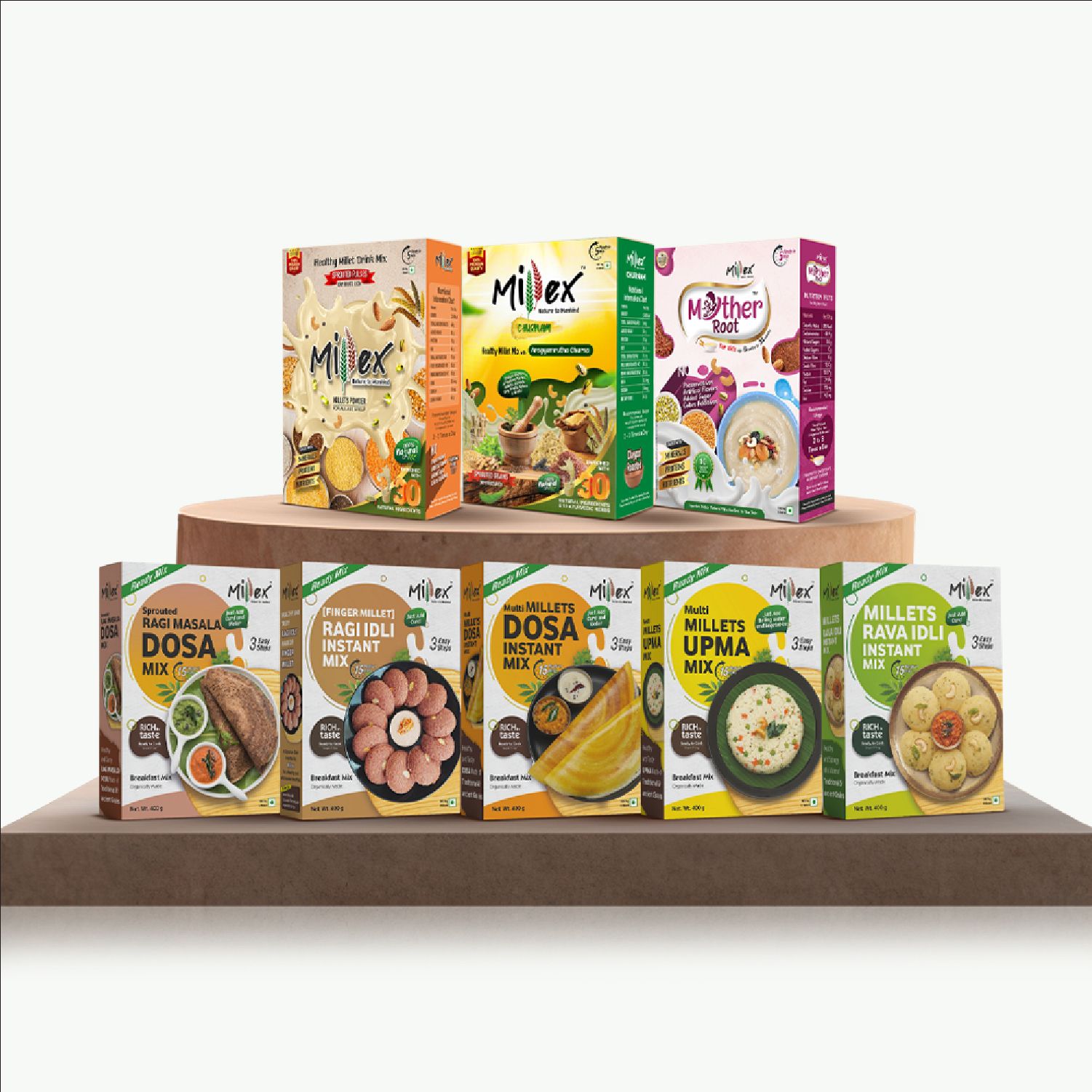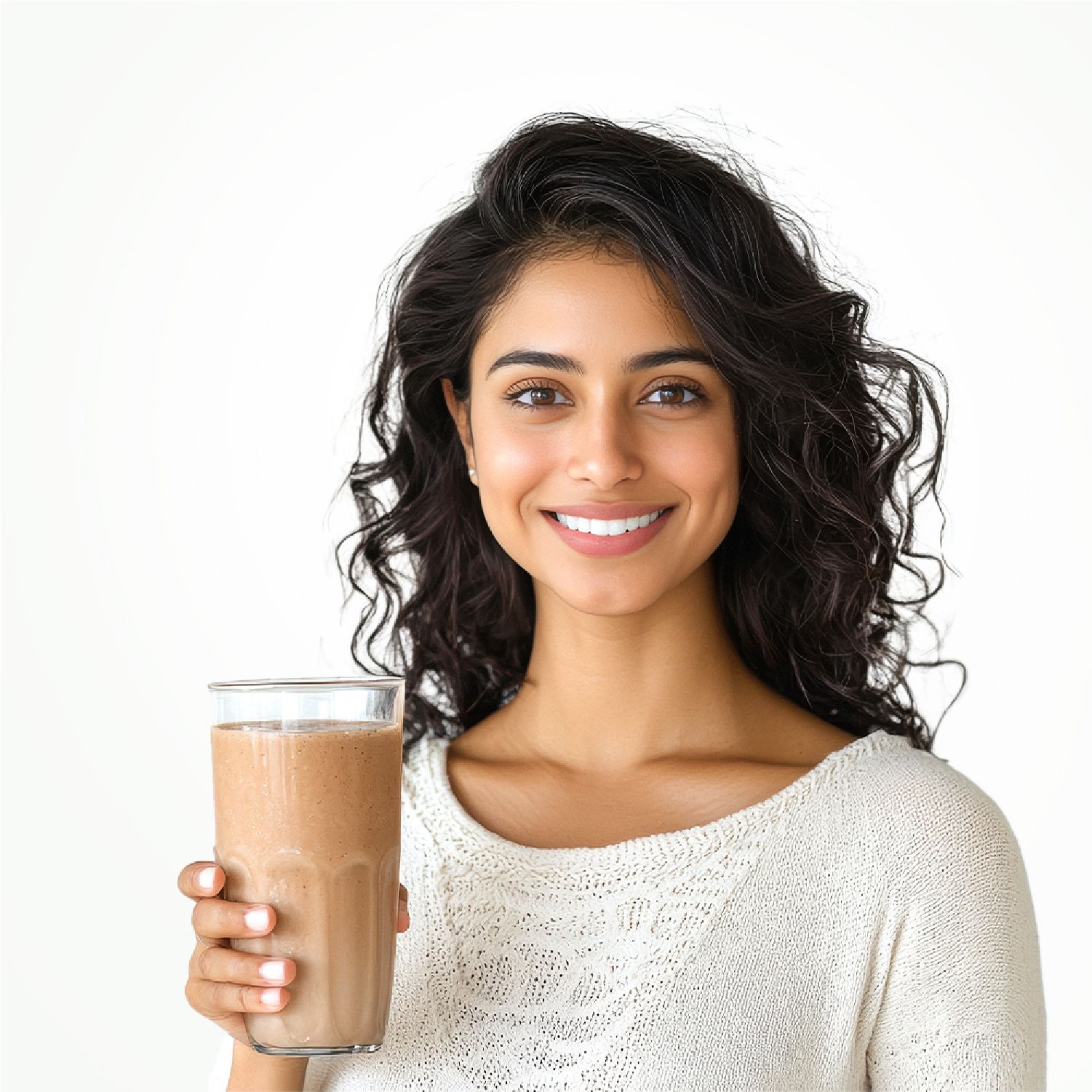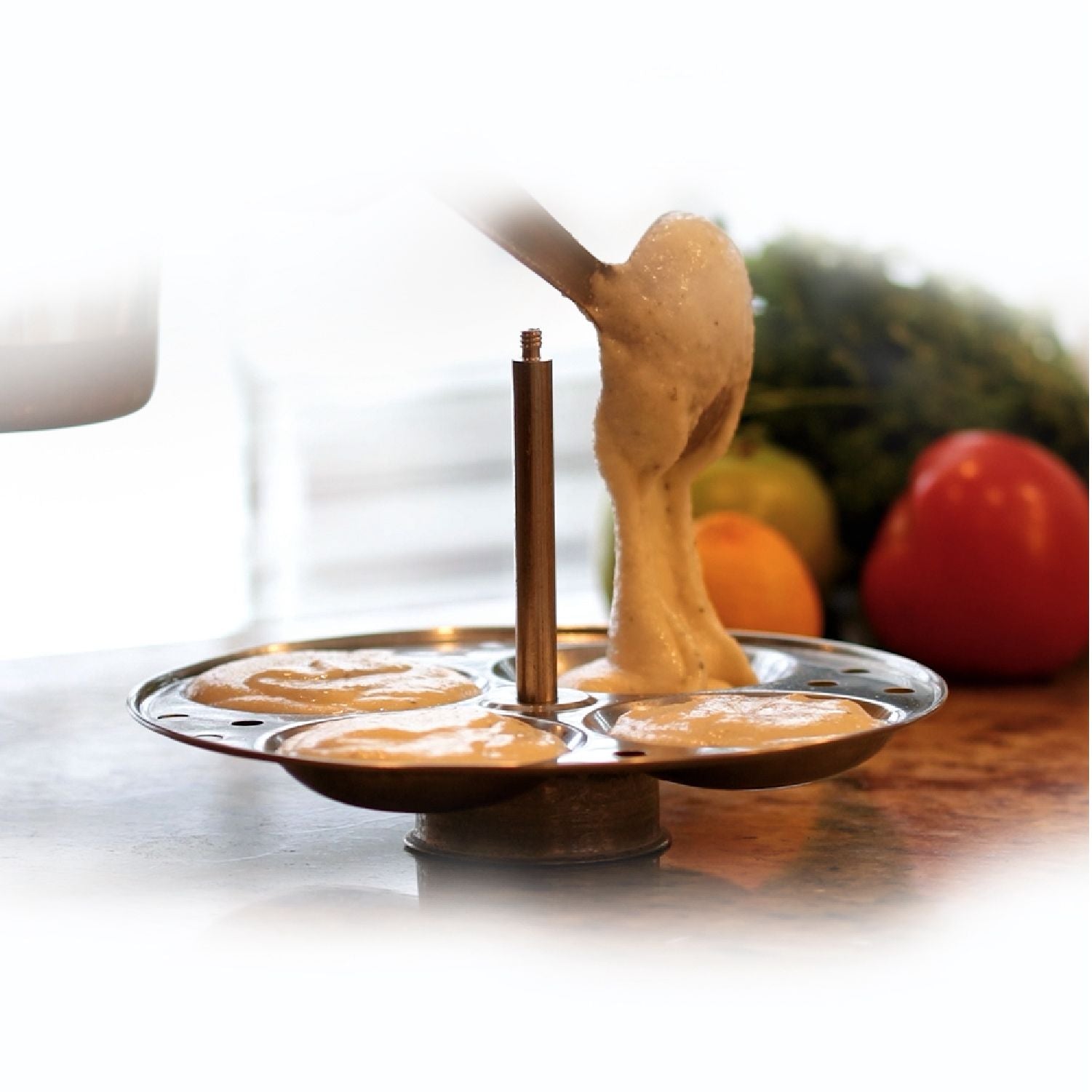Oats Or Ragi Which Is Better For Weight Loss
Are you losing confidence because of your weight gain? If so, you are not alone. Many struggle with losing weight and finding the right diet to help them achieve their goals. With so many options available, deciding what is best for your body and weight loss journey can be overwhelming. Have you ever wondered which is the better option for weight loss: oats or ragi? Both are popular breakfast choices and are known for their health benefits. But when compared, Ragi is the best millet for weight loss, which provides numerous advantages over oats. Here, you can see how Ragi helps in your weight loss journey:
Transform your meals with millet! The best time to eat millet for weight loss is breakfast, lunch, or dinner for a nutrient-rich, weight-friendly diet.

BUY NOW
Ragi: The Powerhouse of Nutrition
Ragi, also known as finger millet, is a versatile and nutritious whole-grain cereal that has been a dietary staple in India for centuries. Unlike refined grains, ragi retains its bran and germ layers, making it a rich source of essential nutrients such as fiber, calcium, iron, and amino acids. Incorporating ragi into your diet can significantly enhance its overall nutritional profile.
How Ragi helps In Weight Loss Journey?
- High Fiber Content
Ragi offers significant benefits for weight loss primarily because of its high fiber content. Ragi is rich in dietary fiber, which takes longer to digest than carbohydrates, promoting prolonged satiety. Consequently, it aids in curbing overeating and reducing overall calorie consumption. Thus helps in losing body weight.
- Polyphenols
Ragi is also rich in polyphenols, plant compounds known for their various health benefits. Natural polyphenols possess anti-obesity properties. Regularly including ragi in the diet has been shown to reduce the risk of diabetes mellitus and gastrointestinal disorders, major factors contributing to weight gain.
- Gluten-Free
Ragi is gluten-free, making it a suitable option for individuals with gluten allergies or sensitivities. Do you know? Gluten consumption may be linked to weight gain, especially in the abdominal region. However, gluten-free foods like ragi could potentially support weight loss efforts for some individuals.
- Tryptophan
Ragi contains a lot of tryptophan, an essential amino acid required to produce melatonin and serotonin, sometimes known as the "feel-good" hormone. Serotonin regulates mood and is a natural hunger suppressant, whereas melatonin controls metabolism. Ragi's high tryptophan concentration helps to ease hunger and allows for a lower calorie intake. Furthermore, tryptophan helps soothe the nerves, supporting healthy sleep, which is essential for efficient weight management.
Ways To Incorporate Ragi Into Your Diet:
Here are some creative ways to include ragi in your diet:
- Ragi Porridge or Cereal: Kickstart your day with a nourishing bowl of ragi porridge or cereal.
- Ragi Roti or Dosa: Swap traditional wheat rotis or dosas with ragi alternatives.
- Ragi Smoothies: Blend ragi flour with yogurt, fruits, and honey to whip up a delightful and nutritious smoothie.
The Bottom Line
Ragi can significantly improve your weight loss journey. If you are a busy individual looking to lose weight, buy millet mix powder from Millex. This health mix contains 100% natural ingredients and zero artificial flavors, additives, or colors and this can be your perfect partner in your weight loss journey.

1.How does ragi help with weight loss?
Ragi is rich in dietary fiber, which helps keep you full for longer, reducing overall calorie intake and curbing hunger pangs. This helps prevent overeating, making it an ideal choice for weight management.
2. Is ragi a low-calorie food?
Yes, ragi is relatively low in calories compared to other grains, but it is nutrient-dense. This means it provides essential nutrients without adding excessive calories to your diet, making it beneficial for weight loss.
3. Can ragi boost metabolism?
Yes, ragi is packed with essential amino acids like methionine and lecithin, which help in eliminating fat and improving metabolism, aiding weight loss efforts.
4. Is ragi suitable for a low-carb diet?
While ragi contains carbohydrates, it is a good source of complex carbs that digest slowly. This results in a steady release of energy and prevents sudden spikes in blood sugar, which is helpful in weight management.
5. How does ragi compare to other grains for weight loss?
Compared to refined grains, ragi has a higher fiber content and is gluten-free, making it a healthier and more filling alternative. It also has a lower glycemic index than rice or wheat, making it better for controlling hunger.
6. Can I eat ragi daily for weight loss?
Yes, incorporating ragi in moderation can support weight loss, as long as it's part of a balanced diet. Ragi can be consumed in various forms like ragi dosa, ragi roti, or ragi idli.
7. Does ragi help in reducing belly fat?
Ragi's high fiber content helps regulate digestion and reduce bloating. Though no food specifically targets belly fat, eating fiber-rich foods like ragi can promote a healthier weight and reduce fat over time.
8. Are there any side effects of eating too much ragi for weight loss?
Consuming too much ragi may lead to digestive issues like bloating due to its high fiber content. It's essential to eat it in moderation as part of a balanced diet.






